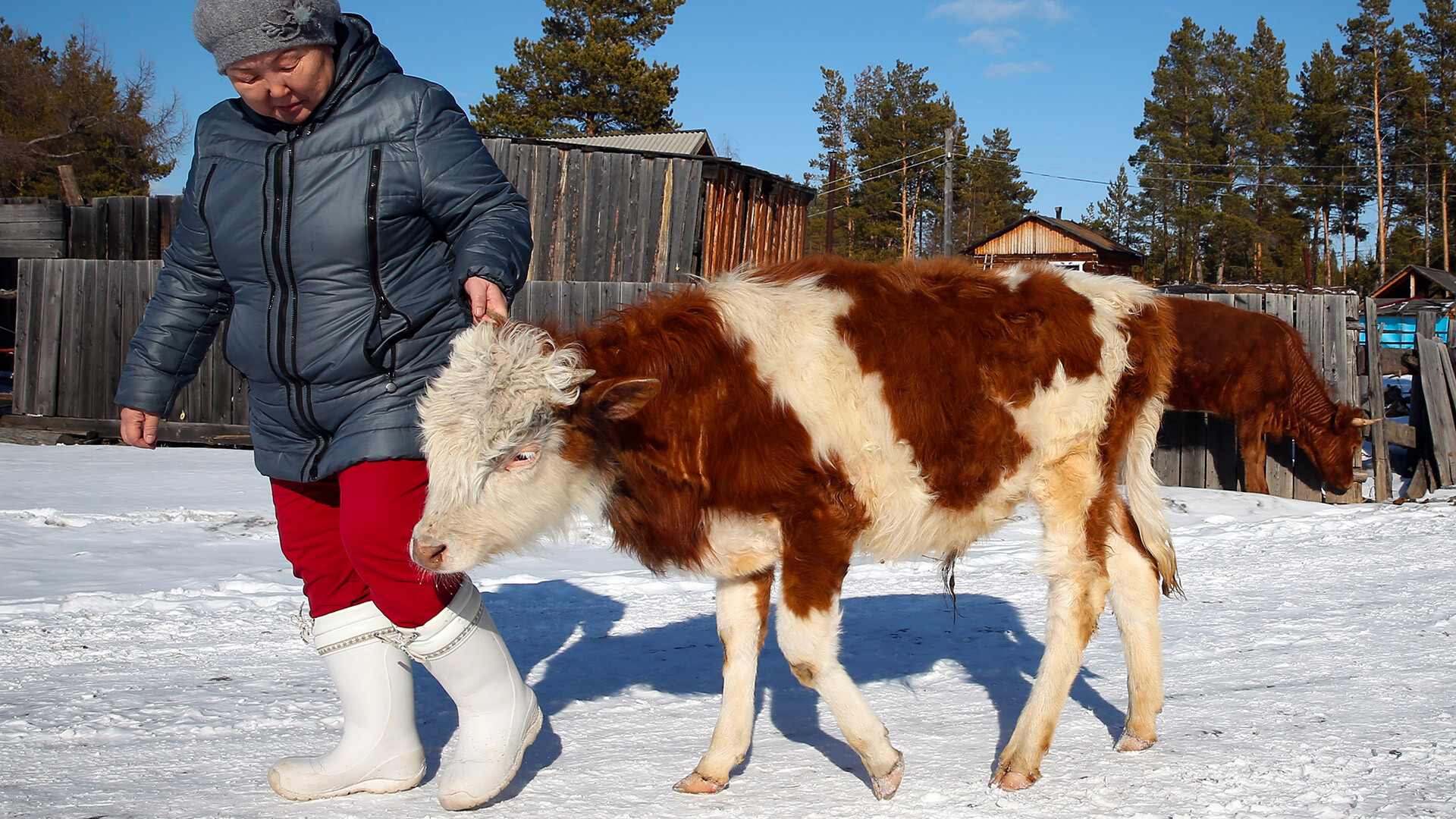
A local resident seen with cows in a street of the village of Kempendyay.
Alexander Ryumin/TASSYakutia is Russia's coldest region, with winter temperatures dropping to -50°C on average, but often even lower. People have to be heavily equipped to survive the cold. But what about wildlife? We have already reported about a special breed of Yakut horses. And now, let us tell you about an incredible breed of Yakut cows that can easily spend an entire day out in the freezing cold and still be perfectly fine.
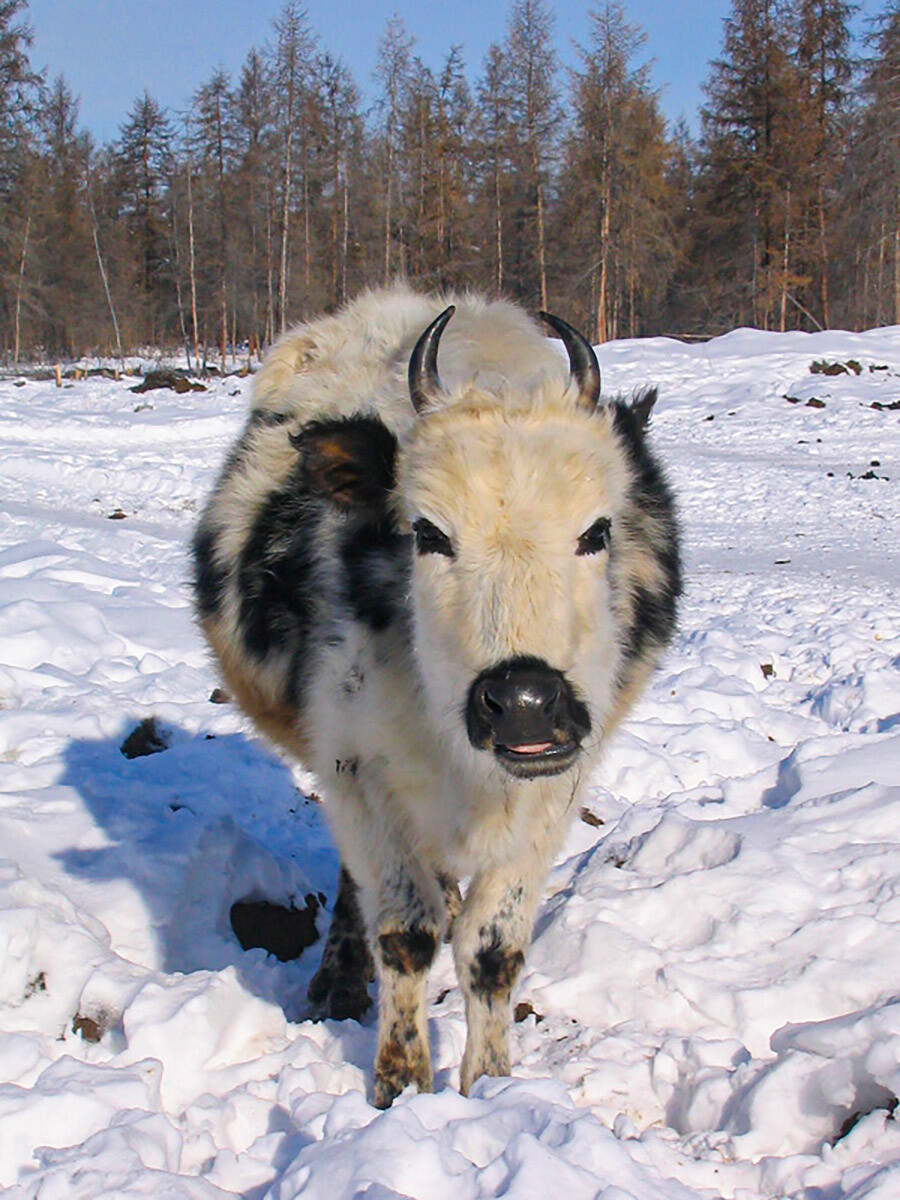
Yakutian cattle in the Eveno-Butantay district.
Anu Osva (CC BY-SA)The first eye-catching thing is that the Yakut cows are very small, about 1.5 times smaller than any European breed. The height of an adult cow is only 110 cm. It weighs only 400 kg on average (particularly large bulls can reach 600 kg), while other cow breeds usually weigh about 600 kg and bulls about 1,000 kg.
The Yakut cow has short and strong legs, as well as incredibly thick wool of different colors. This is essential for survival in the extreme cold in winter and protection from the infamous Yakut mosquitoes in summer.
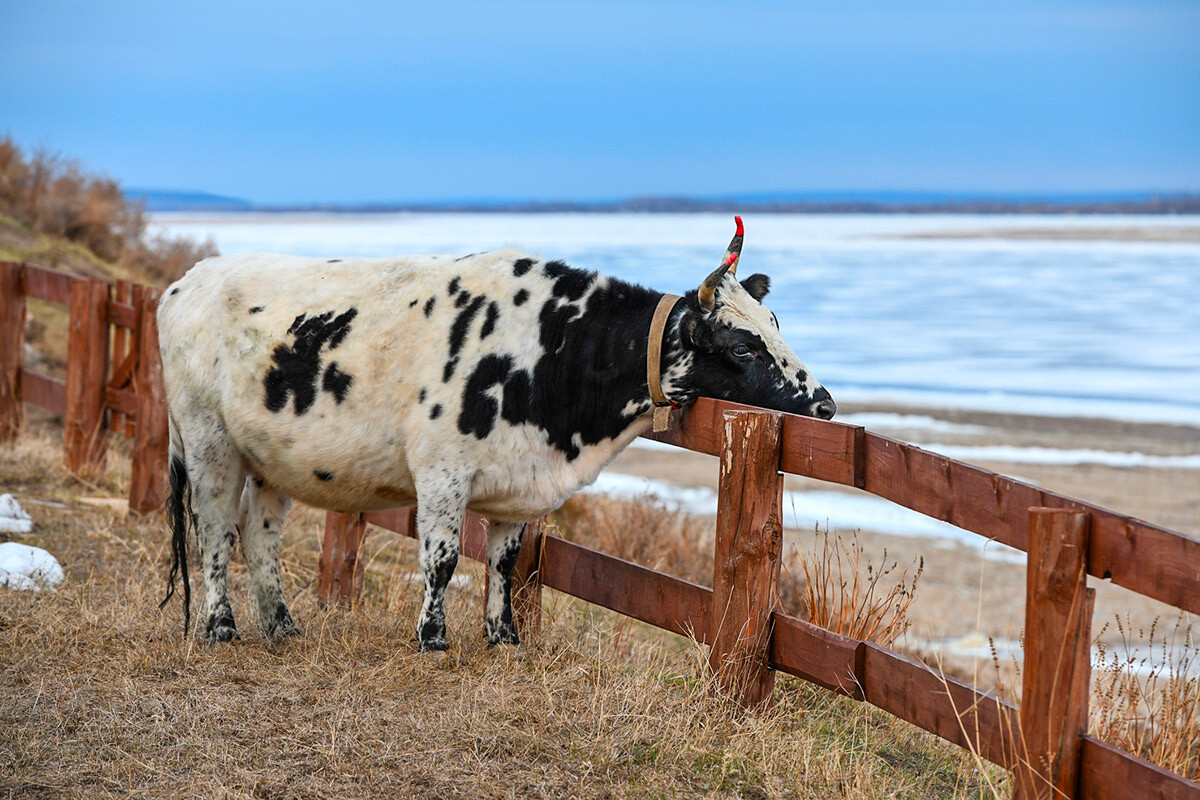
Yakut breed cow near river Lena.
Legion MediaIn Yakutia, there is the so-called “pole of cold”. Oymyakon and Verkhoyansk are some of the coldest places on earth where people live permanently. Some recorded temperatures have reached as low as -70°C, but it is cold in other parts of the region, as well.
In winter, they no longer graze in the meadows, of course, but they still go to the watering hole. Some farmers sew “bras” for them to keep their udders warm in any weather.
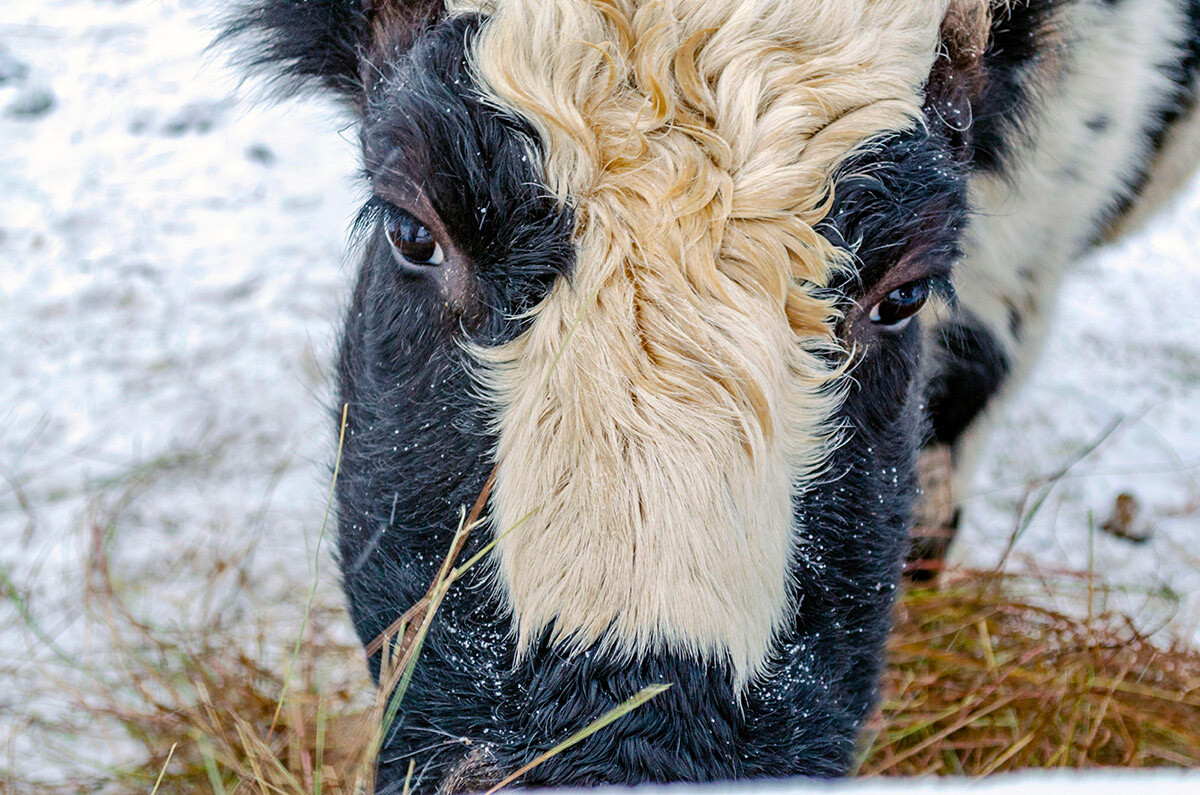
There was a case in Eveno-Bytantaisky district in northern Yakutia, when three young cows went for a walk in mid-September and returned home in December in -40°C. The cows in the wild ate old grass and snow.
In the Viluy district in central Yakutia, one cow also left home in September and returned at the end of January and, after all this, gave birth to a calf right outside in -45°C.

A calf seen in a street of the village of Kempendyay.
Alexander Ryumin/TASSIt turns out that such “stamina” derives from nature. Scientists from the Institute of Cytology and Genetics of the Siberian Branch of the Russian Academy of Sciences identified a unique gene mutation in the Yakut cow that is also found in seals and walruses. When it gets cold, their heartbeat slows down and the body saves energy.
Also, the Yakut cow has a longer digestive tract than other cows, which means that they can digest less nutritious and less succulent food.
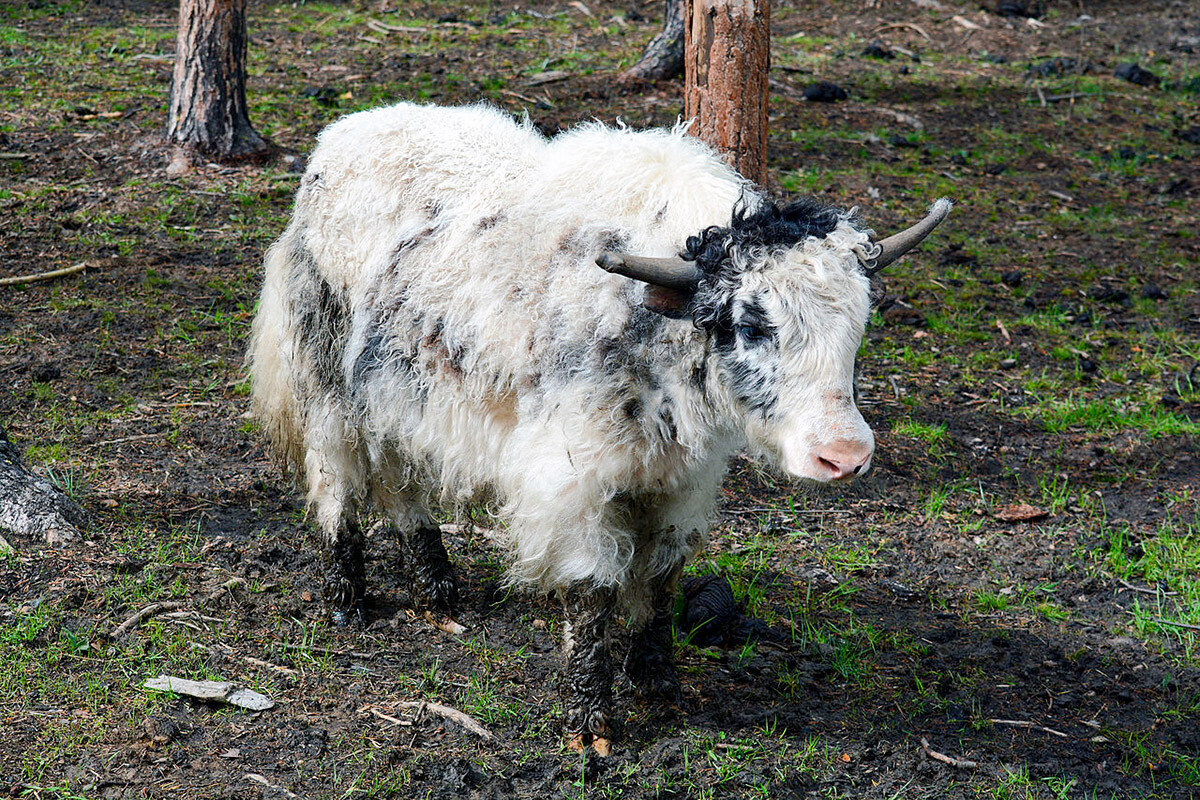
Nature Park "Aan Ayylgy". Mirny.
Staselnik (CC BY-SA)It remains to be studied how exactly these cows appeared in Yakutia, but it is known that this species separated from the European ones about 5,000 years ago (the ancestors of cows - aurochs - were domesticated 8,000 years ago in the Middle East). The cows were able to evolve and adapt to the Yakutian conditions.

Newborn Calves in a Farm Shed in Yakutian village.
Legion MediaDespite their endurance, the Yakut breed is rather rare. Due to the fact that they produce little milk and meat, they are not very profitable to breed. In Soviet times, when collective and state farms were formed en masse all over the country, the Yakut breed was crossed with others to increase the amount of milk. But, this only led to a reduction in the indigenous cow.
Yakut cow, really, gives little milk, but its fat content is about twice that of the European breeds - up to 11% and contains more protein and minerals.
Today, on the contrary, scientists and farmers are reviving the Yakut cow population. There are about 2,500 of them, including 900 dairy cows.
Dear readers,
Our website and social media accounts are under threat of being restricted or banned, due to the current circumstances. So, to keep up with our latest content, simply do the following:
If using any of Russia Beyond's content, partly or in full, always provide an active hyperlink to the original material.
Subscribe
to our newsletter!
Get the week's best stories straight to your inbox